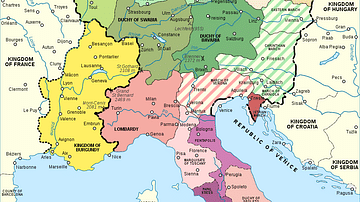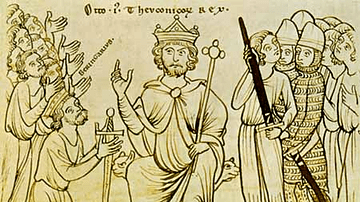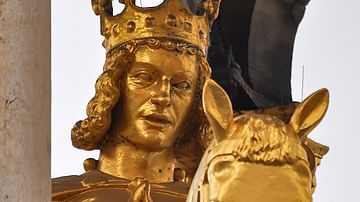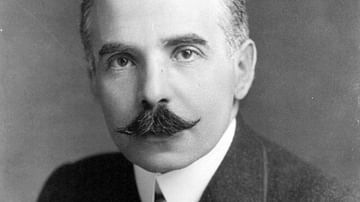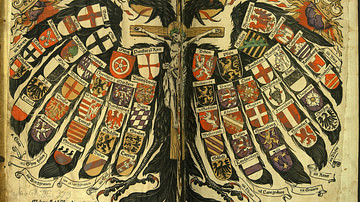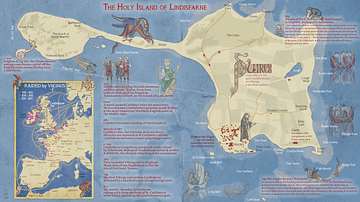Illustration
A map illustrating the emergence of the Holy Roman Empire (after the final split of the Eastern and Western Franks in the late 9th century) as a loosely integrated union of German states and cities under the rule of Otto I, driven by tradition and common purpose, and kept together by suppression of rebellious vassals, personal loyalties and reciprocity. Otto (traditionally known as the Great) extended the German kingdom to the east, turned Bohemia into a tributary state, became king of the Lombards, decisively defeated the Magyars, and yielded influence from Denmark to Burgundy. He was crowned emperor (Imperator Augustus) in Rome in 962, twice removed inconvenient popes, and systematically used the church for his ends and as a stabilizing influence.
About the Author
Cite This Work
APA Style
Netchev, S. (2022, September 26). Otto the Great and the Holy Roman Empire c. 972. World History Encyclopedia. Retrieved from https://www.worldhistory.org/image/16428/otto-the-great-and-the-holy-roman-empire-c-972/
Chicago Style
Netchev, Simeon. "Otto the Great and the Holy Roman Empire c. 972." World History Encyclopedia. Last modified September 26, 2022. https://www.worldhistory.org/image/16428/otto-the-great-and-the-holy-roman-empire-c-972/.
MLA Style
Netchev, Simeon. "Otto the Great and the Holy Roman Empire c. 972." World History Encyclopedia. World History Encyclopedia, 26 Sep 2022. Web. 13 Apr 2025.



